Theme from Silk Road (7) by Kitaro
Re-visiting the Silk Road in China
in 2017 - Part 2/2
B 7 - Zhangye National Geopark 张掖国家地质公园
This geopark is located in the northern foothills of the Qilian Mountains 祁连山 within the prefecture-level city of Zhangye. It covers an area of 322 sq km. There are 3 main scenic areas. We visited the main one at Linze 临泽, 30 km west of downtown Zhangye.
The Zhangye Danxia Landform (the word “Danxia 丹霞” means colourful, especially with a lot of bright red) is well known for the unusual colours of the rocks. The folded, layered oceanic crust combined with freeze-thaw peeling and wind and water erosion give rise to its present appearance. The exposed slanting rock layers have different colours, textures, shapes, sizes, and patterns. A fantastic landscape befitting the name of "China's Rainbow Mountains".
Access to the rocks is strictly controlled. We could only walk on designated paths. And not every hill is a rainbow. The last photo shows the monochrome viewing hillock.
B 8 - Xiahe 夏河
Xiahe is a mountainous county to the south-east of the province, on the northeast edge of the Qinghai-Tibet Plateau. The average elevation is 3,000 m. The county is populated by ethnic Tibetans, up to 78%. In recent years it has become a tourist town because of its Tibetan culture and highland scenery. Shown street scenes and our hotel at Xiahe, all in Tibetan style. Quite a cold night because of the high altitude. We had a warming steamboat dinner here.
B 9 - Labrang Tibetan Buddhist Monastery 拉卜楞寺
This monastery is one of the largest Tibetan Buddhist monasteries outside the Tibet Autonomous Region. It was established in 1709 and is now one of the top monasteries of the Gelug Sect (Yellow Hat), especially in Buddhism education. Many buildings were destroyed during the Cultural Revolution in the 1960s. What is seen today are mostly built in the 1980s or newer. It is the mother monastery of over 100 sub-monasteries of Labrang Monastery in China.
Pilgrims, prayer wheels, a plaque given by the Qing Dynasty officials in 4 languages (Han Chinese, Manchurian, Tibetan and Mongolian) and part of a giant thangka.
And lastly showcasing some Tibetan-style doors and windows: some simple, some elaborate; some new, some old.
B 10 – Lanzhou 兰州and Lanzhou beef noodle
We had a stop in Lanzhou, a city of 3 million people and a transport hub. Lanzhou is famous for its beef noodle which was said to have started in 1799 during the Qing Dynasty. It was then more for the upper class. In 1915 a Hui Muslim established his recipe (and specifications) of beef noodle for the general public and it has become the preferred breakfast meal for the locals. And as a fast lunch meal too in the fast pace modern society. It is of course hahal.
In fact the noodle become so widely consumed that the city government set price limits to it, since 2007. The current price limit is 7 Yuan (RM 5.29) for the low-end restaurants, like our coffee shops. The noodle is always hand-made, freshly made too in the restaurant itself, the familiar la-mian 拉面. Customers could choose several types of noodle according to the size. Shown a typical bowl. The beef included in the 7 Yuan bowl consists of only a few small pieces. The plate of beef in the photo is in fact an extra order, also 7 Yuan.
(Note in 2021: the price limit is now 8 Yuan)
B 11 – Riverside Road or Binhelu 滨河路in Lanzhou
We had less than a day in Lanzhou and we spent the time roaming a stretch of the riverside of the Yellow River or Huanghe黄河. The name of the road is Binhelu 滨河路, both the south Nan-Binhelu 南滨河路and north Bei-Binhelu 北滨河路. Shown the pedestrian part of Nan-Binhelu, with a statue park of the characters in the classic “Journey to the West”, a story which happened along the Silk Road.
Zhongshan Bridge 中山桥
The Zhongshan Bridge was the first permanent bridge over the Yellow River in the whole of China. It is named after Dr Sun Zhongshan 孙中山(or Sun Yat-sen in the old spelling)who was the first president of the Republic of China. The nick name is “The First Bridge over the Huanghe 黄河第一桥”. The 233-m long bridge was constructed in 1909 by German contractors. It now serves only pedestrian traffic. A popular photo shoot location for the graduating class.
Waterwheels Park
The people of Lanzhou has been using waterwheels for irrigation since the 1520s. In 1952 there were still 252 waterwheels in the city, giving it a nick name of “the City of Waterwheels”. At the Waterwheel Park 兰州水车园there are 2 giant waterwheels on display.
Sheep skin raft
In ancient time, people crossed the Yellow River with the help of inflated watertight bags made of goat skin. A few members in our group enjoyed that experience by sitting on top of a raft supported by such skin bags. No crossing of the river though but just drifting along the side of the river.
Lanzhou Water Mosque 水上清真寺
Lanzhou has about 100,000 Muslims, mostly the Hui people. There are 6 or 7 mosques in the city. We visited the Lanzhou Water Mosque on the north side of the Yellow River. It was first built in the 1910s. It is designed to look like a long boat if viewed from the other side of the river, with traditional Chinese style garden on the landside.
White Cloud Temple 白云观
This is a Taoist temple founded in 1837. The main deity worshipped is 吕洞宾or Lu Dongbin, a legendary figure featured as one of the “8 Immortals 八仙” in Taoist folklore.
---------- Gansu province completed, now Shaanxi province ----------
C 1 - Shaanxi province陕西
Shaanxi is a province in central China. Area 205,000 sq km, about 60% of Malaysia. Shaanxi comprises the Wei Valley 渭河谷 and much of the fertile Loess Plateau 黄土高原 bordering the Qin Mountains 秦岭. Population is 37 million, almost entirely Han. The capital is Xi’an with an urban population of 7.1 million people.
Shaanxi is considered one of the cradles of Chinese civilization. Thirteen feudal dynasties established their capitals in the province or nearby regions spanning more than 1,100 years, from the Zhou Dynasty 周朝 to the Tang Dynasty 唐朝. Its current economy is led by manufacturing, mining, services and agriculture.
C 2 - Xi'an 西安
Xi’an is the capital of Shaanxi, urban population 7.1 million. Xi'an became a political centre of China in the 11th century BC with the founding of the Zhou Dynasty 周朝. It became the capital of a unified China when the Qin Dynasty 秦朝succeeded in conquering and unifying other warring states. The succeeding Han Dynasty 汉朝also built the capital here, completing the Han city wall in 190 BC. The city was named Chang’an 長安then. Xi'an was abandoned in 904 at the end of the Tang Dynasty 唐朝.
The city is a UNESCO World Heritage site. The most famous tourist attraction here is of course the mausoleum of Qin Shi Huang 秦始皇 (259 BC – 210 BC), the founder of the Qin Dynasty, with its army of terracotta warriors. We gave it a miss this time as we last saw that in 2005. Shown scenes near the centre of the ancient city.
City Wall 西安城墙
The Xi’an city wall is one of the oldest, largest and best preserved city walls in China. It was completed in 1378 in the initial years of the Ming Dynasty 明朝, built on part of older walls. The wall encloses an area of about 14 sq km. The wall was enlarged and refurbished many times in history, last in the 1980s. The original wall, for security reasons, had only 4 gates. The wall now has 18 gates, the new ones for traffic purposes. The restored wall is 12 m high, 18 m wide at its base, 15 m wide on the top, about 13.7 km in total length.
Shown the East Gate 长乐门, one of the 4 original gates, with the arrow tower 箭楼in the 2nd photo. Also one of the many pavilions on top of the wall. One could rent a bicycle to ride on the wall, but limited to those younger than 60. We failed to rent a bicycle.
Drum Tower 西安鼓楼
The Drum Tower was erected in 1380 during the early Ming Dynasty. It got its name from the huge drum in the building beaten at sunset to announce the end of a day. It is a two-storied timber structure, 34 m total height with an elevated base platform, 8 m high. The building was constructed without the use of a single nail.
The giant drum on the top floor to be hit to signal time was no more in service. A duplicate was made in 1996 and placed on the ground floor near the entrance.
There is a series of 24 drums on its north and south sides on the 1st floor. They stand for the 24 weather calendar days created by the Chinese to guide agricultural activities 二十四节鼓. Many drums are in fact kept here, including special ones in the museum section.
The photos here show the Bell Tower of Xi’an 西安钟楼, a sister tower located 200 m away to ring the bell to announce the beginning of a day.
Grand Mosque 西安大清真寺
Located on Muslim Street this is the largest mosque in China. There are more than 20 buildings covering an area of 12,000 sq m.
Most of the buildings are dated to the early Ming Dynasty or the 15th century. The mosque's architecture combines a traditional Chinese structural form with Islamic functionality. Calligraphy in both Chinese and Arabic appears throughout the complex.
The complex has 5 courtyards. The 1st courtyard has a monumental gate while the 4th courtyard has the Phoenix Pavilion, a kind of gazebo housing 2 stone stelae recording the history of repairs to the mosque.
The main prayer hall is in the 4th courtyard, a timber building which can accommodate a thousand people. We were not allowed entry, probably because there was an on-going prayer session. On both side of the main entrance could be found this couplet, saying something like "This ancient religion is unique and supersede the (rule of the) universe" and "Islam is no other, originally a truly moderate (religion)".

Muslim Street 西安回民街
This Muslim Street is a 1.1 km pedestrian street near to the Bell/Drum Towers. It is, together with the side lanes, famous for food considered halal and suitable for Muslims, or essentially pork free. Shown some scenes, including a chilli shop and a chef kneading dough to make candy.
St Francis Cathedral 西安圣方济各主教座堂
The Catholic church was built by Italian missionaries in 1716. Its history is quite typical of many Chinese churches. Catholicism was officially banned by the Qing Emperor in the late 1720s and the church building was taken over by the state. The site was returned to the Church only in 1884 and a new and bigger church was built. It was again closed in 1966 during the Cultural Revolution and was used as a warehouse. It was returned to the Church in 1980. In 1990 it went through a major renovation funded by the government.
In October 2016 it marked its 300 years’ history and the feast day of Saint Francis of Assisi by having a 4 day celebration program. The anniversary mass was said to have an attendance of 3,000. A rare event of such massive religious celebration in China. The current archbishop is one recognized by both the Vatican and the Government (through the Chinese Patriotic Catholic Church). Good government relationship works wonders.
---------- The tour is ended, so is the story. Thanks for reading ----------
D 1 – Footnote
The tour was marketed by YonGo Travel (www.yongo.biz) and led by Min Yee. Thank you very much, Min Yee.
A group photo at the home-hostel in Dunhuang, with host David and his wife and son. Photo credit: Kenny. There are 18 of us, with 4 young ones. We are the oldest pair.
(First written in April 2018 in the email format. Lightly revised to this PDF format in August 2021)




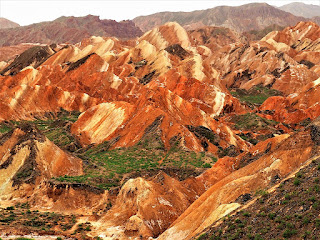











































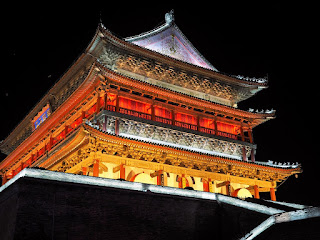






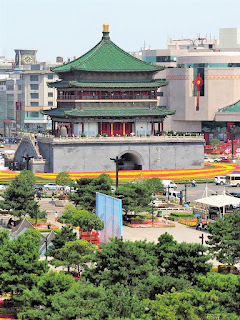





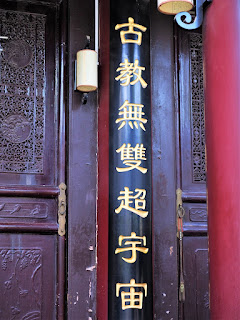




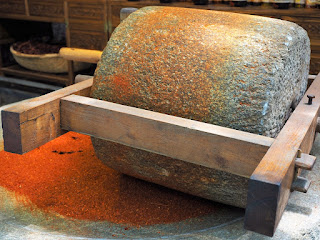



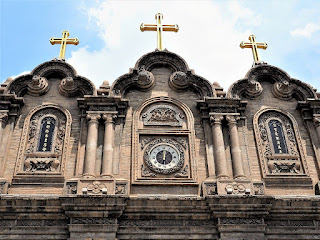



No comments:
Post a Comment